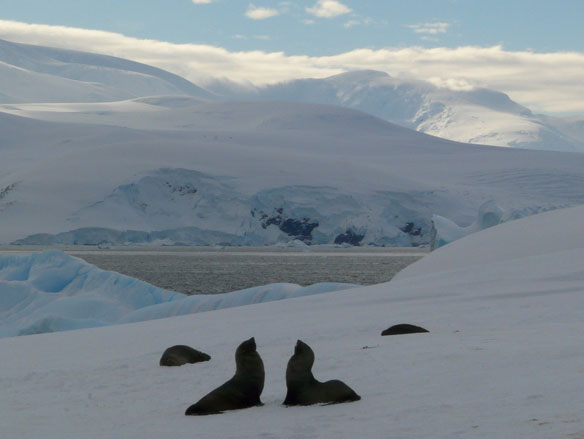By Richard Paige / Greenpeace
“Once again I am attending a meeting of the strangely named CCAMLR (the Commission for the Conservation of Antarctic Marine Living Resources), the organisation responsible for looking after the icy waters that surround Antarctica.
But this meeting in Bremerhaven, Germany, is different – it is a ‘special’ meeting. Its focus is particularly close to this campaigner’s heart, as it is solely concerned with two proposals to protect huge areas of the Ross Sea and East Antarctica.
These areas are some of the most pristine to be found anywhere in the world. Approximately 10,000 species live in the Southern Ocean, many of which cannot be found anywhere else on the planet. As yet relatively unaffected by human activities, the Ross Sea and East Antarctica are home to huge numbers of top predators.
Adelie and emperor penguins, Antarctic petrels and Weddell seals, Ross Sea killer whales and colossal squid all thrive in these remote waters. However these species are under increasing threat; climate change and ocean acidification are already impacting the Antarctic marine ecosystem and the depletion of more accessible fishing grounds has meant that it is profitable for fishing vessels to make the long journey south to fish for Patagonian and Antarctic toothfish, a key species in the Antarctic food web…”
The Ross Sea proposal (being put forward by the USA and New Zealand) and the East Antarctica proposal (developed by Australia and France) are highly significant. If agreed they would constitute two major stepping stones towards achieving a circumpolar network of protected areas, which in turn could be part of a future global network of marine reserves. The proposed areas are large in scale. The Ross Sea proposal would cover 2.3 million square kilometres including 1.6 million square kilometres of ‘no-take’ marine reserve and the East Antarctica proposal encompasses 1.63 million square kilometres. Scientific studies tell us that we need to protect large areas if we really want to safeguard the health of our oceans, not only the individual species and habitats, but the ecosystem processes that are essential to the functioning of the planet. While the science points to a total coverage of 20-50% being what is required, but as yet only 2.9% of the ocean is protected and less than 1% of the high seas. Designating these areas would not only safeguard some of the amazing marine life of the Southern Ocean but also send out a strong signal as to what is possible.
The Antarctic mining ban and agreement of the Madrid protocol were major environmental victories that protected the continent; now it is time to protect the surrounding ocean. Here in Bremerhaven we are working with our friends in the Antarctic Ocean Alliance to encourage all the CCAMLR members that they too can work collaboratively, reach consensus and leave a lasting legacy for future generations. Outside the meeting a group of Greenpeace volunteers are showing delegates and people passing by what is at stake and how many people worldwide, most of who will never get the chance to go to Antarctica, care. A twitter wall in an ice frame is displaying tweets from all around the world urging delegates to do the right thing.
It’s not too late to send your message: just make sure you include the hashtag #AntarcticOcean. Let’s hope the decision makers listen.
Richard Page is an Greenpeace Oceans Campaigner at Greenpeace International
Original Article and Learn More, Richard Paige / Greenpeace
DiCaprio, Cameron, Branson: Protect Antarctic Ocean, LiveScience










